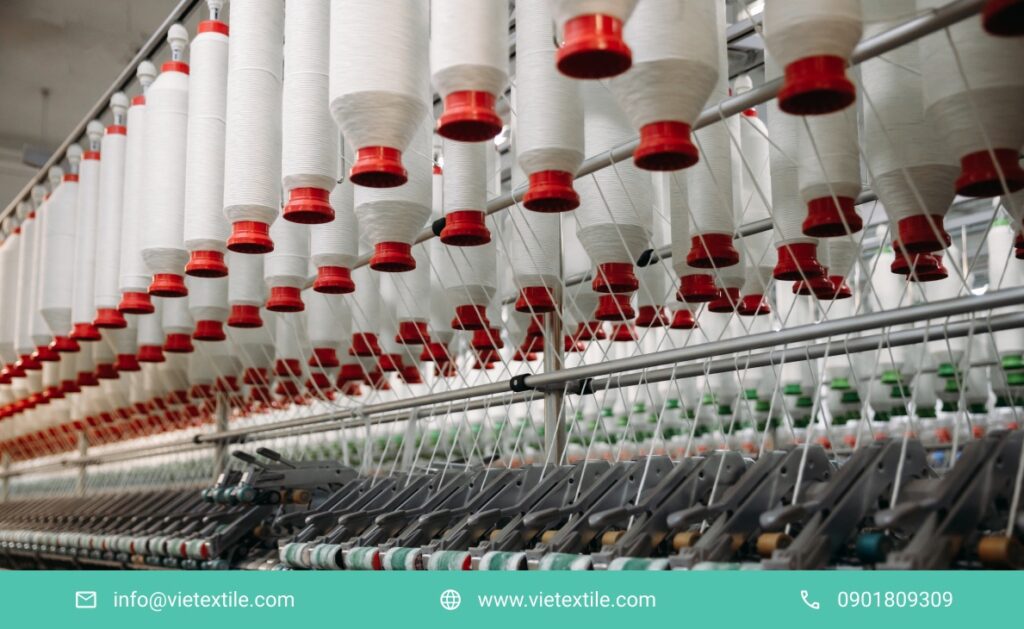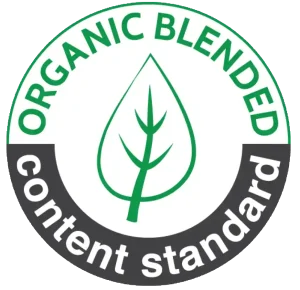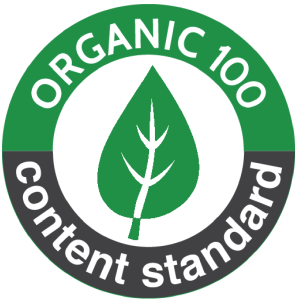Functional fibers can be antibacterial, odor-eliminating, or UV-protective, but how are they created? This article will give you a comprehensive understanding of functional fiber production technology. To learn about common fiber types and current usage trends, you can refer to the overview article “What is functional fiber? Applications in modern textiles.“

1. Overview of Modern Functional Fiber Production Technology Trends
Nội dung tóm tắt
ToggleThe development of technology and the increasing demand for health, aesthetics, and convenience have driven significant changes in the textile industry. In this evolution, functional fiber is a crucial step forward, as it is not just a simple textile material but also carries functional value for the user.
From fibers with antibacterial, deodorizing, anti-UV, flame-retardant, and quick-drying properties—many of which have been analyzed in the article “A Comparison of Antibacterial and Conventional Fiber – Superior Advantages in Modern Textiles.“
The core difference between conventional and functional fibers lies in the production method: integrating properties from within (intrinsic) or adding supplementary treatments from the outside (extrinsic).
2. Classifying Functional Fiber Production Technology
Currently, functional fiber production technology is divided into two main approaches:
2.1. Intrinsic Functional Integration (from the core)
This technology allows manufacturers to blend functional particles (such as nano-silver, ceramics, or bioactive compounds) directly into the polymer base before spinning the fiber. As a result, the antibacterial or deodorizing properties are “firmly attached” to the fiber and last longer.
2.2. Extrinsic Functional Treatment (surface treatment)
After spinning the fiber or weaving the fabric, manufacturers can add functional properties by coating, immersion, or using enzyme or plasma treatments. This method is flexible and applicable to various materials, but its durability is often lower.
| Criteria | Intrinsic (from the core) | Extrinsic (surface treatment) |
| Functional Durability | High (50–100 washes) | Medium (20–40 washes) |
| Investment Cost | Higher | More flexible, lower cost |
| Integration Level | Good, uniform throughout the fiber | Surface-level, easily loses effectiveness over time |
3. Intrinsic Functional Fiber Technology

One of the prominent trends is the use of compound nanomaterial technology, where functional materials are dispersed into a polymer base such as polyester, nylon, or polypropylene before spinning.
Examples:
- Nano-silver (Ag+): Provides lasting antibacterial properties for medical apparel, underwear, and sportswear.
- Nano-ceramic: Reflects UV rays and helps retain body heat in cold weather.
- PCM (Phase Change Materials): Helps the fiber self-regulate temperature according to the environment.
Pioneering companies:
- Toray (Japan): Developed the AQUAIR® fiber line with nano-integration.
- Invista (USA): Applied antibacterial Lycra® for activewear.
- Hyosung (South Korea): Developed Creora Fresh®, an anti-odor and anti-static fiber.
A key advantage of intrinsic fibers is their high functional durability, which does not diminish after washing and can maintain properties throughout the product’s life cycle.
4. Extrinsic Functional Fiber Technology
This method relies on creating a coating or chemically altering the surface properties of the fiber or fabric after spinning. Common techniques include:
4.1. Coating / Finishing:
Applying antibacterial, anti-UV, or water-resistant chemicals using industrial calendering or coating machines.
4.2. Plasma Treatment:
Creating an activated surface to enhance the bonding between the fiber and the functional chemicals.
4.3. Enzyme Treatment:
Using bio-enzymes to break down odor-causing molecules like fatty acids or ammonia. This mechanism is analyzed in more detail in the article “Odor-Eliminating Fiber Technology: How Does It Work and Is It Really Effective?”.
The advantages of this technology are its low cost and easy applicability to various fiber types, including cotton and viscose. However, the functional durability will decrease with the number of washes and frequency of use.
5. Commonly Used Functional Materials

In the production of functional fibers, the choice of integrated material plays a crucial role in determining its effectiveness. Each material offers distinct properties suitable for different applications in the modern textile industry.
5.1. Nano-silver (Ag+)
Considered the most common material in antibacterial fiber technology. Thanks to its superior bacteria-killing ability, nano-silver is often integrated into underwear, masks, and medical textile products to prevent bacterial growth on the fabric surface.
5.2. Bio-enzymes
An environmentally friendly solution often used in odor-eliminating fiber treatments. Enzymes help break down odor-causing molecules like fatty acids or ammonia, making them very suitable for sportswear, socks, and products worn for extended periods.
5.3. Nano-zinc (ZnO)
In addition to its antibacterial properties, nano-zinc also has strong antifungal characteristics. It is an ideal material for school uniforms, children’s fabrics, or any product that requires a high level of safety for sensitive skin.
5.4. Titanium dioxide
This material is notable for its UV-blocking ability. When integrated into the fiber, titanium dioxide helps protect the skin from the effects of sunlight—especially useful in outdoor jackets, mountaineering gear, and work uniforms.
5.5. Activated charcoal
Activated charcoal is commonly used for odor control due to its ability to absorb volatile compounds. It is a popular choice for pillows, blankets, and furniture in enclosed environments like cleanrooms or high-end hotels.
6. Technical Standards and Testing
To ensure the article meets professional and international evaluation requirements, you can directly reference the following documents and links:
- AATCC TM100 – Antibacterial Finishing Standard
- ISO 20743: Textiles — Determination of antibacterial activity
- OEKO-TEX® STANDARD 100 Certification To ensure the quality and practical effectiveness of functional fibers, the textile industry adheres to strict international standards that test durability, safety, and the ability to be antibacterial or odor-eliminating.
6.1. ISO 20743 – For Antibacterial Fibers
This is an international standard that measures the ability to kill or inhibit the growth of bacteria on fabrics and fibers. It is often applied to fibers containing nano-silver, nano-zinc, or those treated with enzymes.
6.2. ISO 17299 – For Odor-Eliminating Fibers
This standard is specifically used to test the level of elimination of odor-causing compounds such as ammonia (NH3) and isovaleric acid—which are typically body odors. The test is based on the reduction in compound concentration after a period of exposure.
6.3. OEKO-TEX STANDARD 100
This is an important certification that confirms the fiber and fabric do not contain harmful chemicals and are safe for the skin—including children’s skin. It is an almost mandatory requirement for international brands.
7. Challenges and Future Development Trends
Although it offers many advantages, functional fiber production technology still faces some challenges that need to be addressed:
7.1. Functional Durability After Washing
Extrinsically treated fibers often experience a decline in functionality after 20–40 washes. This is a weakness that requires manufacturers to find better adhesion technology or combine it with a protective layer.
7.2. Cost Optimization for Large-Scale Production
Integrating functionality into the polymer core requires specialized machinery and high-level technical expertise, which is not yet suitable for many textile factories in Vietnam. Therefore, there is a need for localized technology solutions.
7.3. New Development Trends
- Multifunctional fibers: Combining antibacterial + anti-UV + moisture-wicking properties.
- Recycled materials + green technology: Developing recycled PET fibers with integrated functionalities.
- Integrating AI into fiber treatment processes: Monitoring and adjusting chemical coating or enzyme treatment temperature in real-time.
8. Frequently Asked Questions (FAQ)
Does nano-silver technology retain its functionality after washing? Yes, if it is integrated into the fiber core, the functionality can be maintained for up to 100 washes without significant degradation.
Can cotton fiber be treated to become a functional fiber? Yes. Cotton can be treated with enzymes, nano-coatings, or plasma to add functions like antibacterial or odor-eliminating properties.
Is the production cost of functional fiber high? On average, it is 10–30% higher than conventional fiber, depending on the technology. However, this is offset by a significantly higher usage and commercial value.
Which technology is the most environmentally friendly? Bio-enzymes and biodegradable materials (bio-based) are sustainable directions favored by international brands.
9. Contact for Custom Functional Fiber Production Consultation
Are you a garment business, a fabric distributor, or an international trading company looking to develop an exclusive line of functional fibers?
Contact VieTextile to:
- Receive technical consultation on suitable materials.
- Order R&D samples upon request.
- Connect with specialized OEM/ODM partners for functional fiber treatment.
- Email: info@vietextile.com
- Hotline: 0901 809 309
- Website: https://vietextile.com










